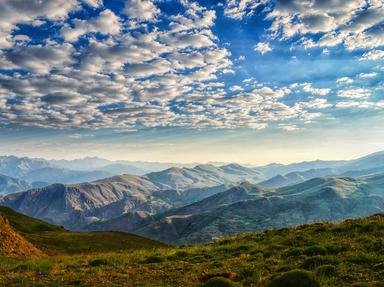Quiz Answer Key and Fun Facts
1. This active volcano is Spain's highest mountain, and one of the highest in Western Europe outside of the Alps
2. Located in central Greece, this majestic mountain was believed to be the home of the Muses
3. The name of this mountain, Scandinavia's second-highest, means "kettle top" in the Sami language
4. This mountain's striking, three-pointed silhouette appears on Slovenia's coat of arms
5. Switzerland's highest peak, the Alps' second-highest, is part of this colourfully-named massif.
6. During the Middle Ages, this very active Icelandic volcano was called the "Gateway to Hell"
7. With a name meaning "Allah's mountain", this Bulgarian mountain is the highest peak in the Balkan peninsula
8. This imposing massif in central Italy, whose name means "great stone", contains the highest peak in the Apennines
9. The German-Austrian border runs over this mountain, popular as a winter sports destination
10. One of the Seven Summits, this dormant volcano in southern Russia is the highest of them all
Source: Author
LadyNym
This quiz was reviewed by FunTrivia editor
agony before going online.
Any errors found in FunTrivia content are routinely corrected through our feedback system.
